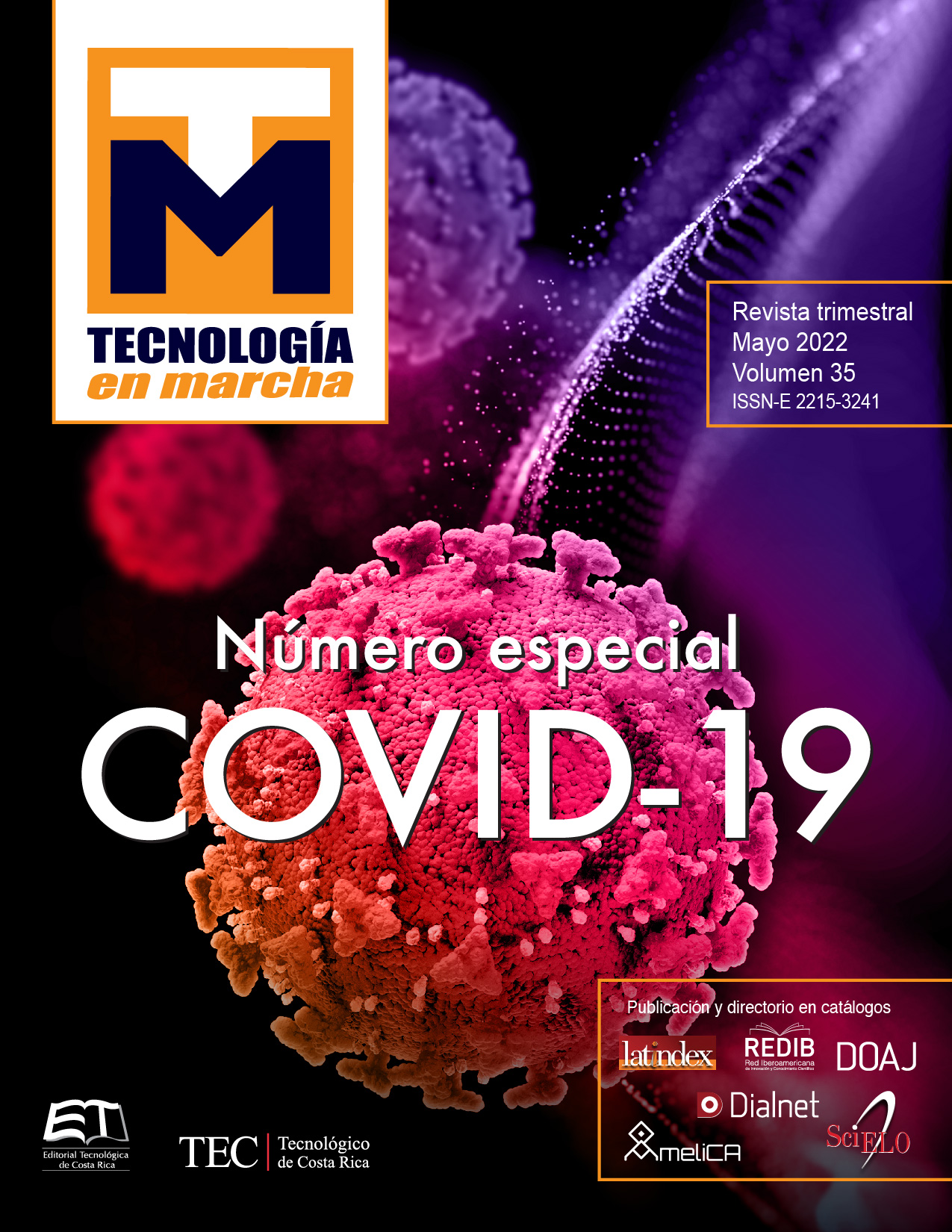Wildlife sighting in cacao plantations in the North Zone, as an added value to the productive system
Main Article Content
Abstract
One of the sectors most affected by the pandemic caused by COVID-19 has been the tourism sector, which has generated not only unemployment but also the closure of many companies that were engaged in this activity. In order to diversify the tourist, offer of cocoa producers in the Upala region, since some farmers, in addition to offering their cocoa production, also offer some services such as guided tours to appreciate the production process and artisan production of cocoa products. Due to this, this project aimed to carry out an inventory of mammals and birds in three cocoa farms in the Upala region for the diversification of the tourist offer through the observation of birds and mammals as a differentiating element of the guided tours. in the farms, which would allow adding value to the service provided, as well as establishing a protocol for observing wildlife in the event of possible zoonoses. To meet this objective, several visits were made to each of the farms analyzed for the sighting of fauna and to analyze the production process. In these visits it was determined that the sampled farms have potential for the observation of emblematic wild mammals, mainly three-toed sloth and howler monkeys, while one of them can be used for bird watching with educational potential and experimental work.
Article Details

This work is licensed under a Creative Commons Attribution-NonCommercial-NoDerivatives 4.0 International License.
Los autores conservan los derechos de autor y ceden a la revista el derecho de la primera publicación y pueda editarlo, reproducirlo, distribuirlo, exhibirlo y comunicarlo en el país y en el extranjero mediante medios impresos y electrónicos. Asimismo, asumen el compromiso sobre cualquier litigio o reclamación relacionada con derechos de propiedad intelectual, exonerando de responsabilidad a la Editorial Tecnológica de Costa Rica. Además, se establece que los autores pueden realizar otros acuerdos contractuales independientes y adicionales para la distribución no exclusiva de la versión del artículo publicado en esta revista (p. ej., incluirlo en un repositorio institucional o publicarlo en un libro) siempre que indiquen claramente que el trabajo se publicó por primera vez en esta revista.
References
R.D. Aramburo.2017. Condiciones Productivas de Cacao de los Territorios Rurales de la Zona Norte y Caribe Rica. [En Línea ] Disponible https://repositorio.iica.int/bitstream/handle/11324/6460/BVE18029637e.pdf?sequence
Comisión Institucional de Cacao. 2018. Plan Nacional de Cacao 2018. [En Línea] Disponible http://www.mag.go.cr/bibliotecavirtual/E14-11072.pdf
SEPSA (2017). Análisis de la actividad cacaotera costarricense y perspectivas de su reactivación. [En Línea] Disponible de: http://www.mag.go.cr/bibliotecavirtual/E16-10869.pdf
B. Álvarez-Garay. (2017). Métodos de registros en fincas agropecuarias en la Región Huetar Norte de Costa Rica. CONFibSIG. [En Línea]. Disponible https://www.researgate.net/publication/328642833
C. Bibby, J., Burguess, N. D., & Hill, D. A. Bird Census Techniques. San Diego, CA: Academic Press Inc. 1992.
N.A. González-Valdivia, F. Casanova-Lugo, W Cetzal-Ix.” Sistemas agroforestales y biodiversidad”, Agroproductividad: Vol. 9, Núm. 9, septiembre. 2016. pp: 56-60

